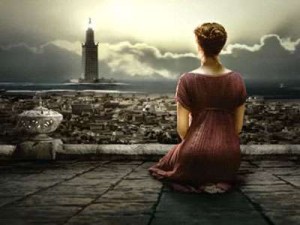
This is my personal admission: I smell like charred bonfire. But I do have a good reason.
On Wednesday, I woke up early to make it to a local Birkat Ha-Hammah ceremony. It was cloudy and rather cold out, so I wasn’t sure that it was going to be possible to bless the sun. It simply wasn’t visible. My husband and daughter were still sleeping, so I headed out quietly. There had been a snowfall the night before, and I found it rather incongruous to be brushing snow off of the car immediately before heading off to bless the sun and burn leavening (hametz) for Passover.
When I arrived at the first location (there were at least two ceremonies being held nearby) nobody was there, and the sun was still covered with clouds. I looked in the general direction of the east and began to recite the blessing on the sun anyway. But a few words into the blessing, the clouds parted, and I could clearly see the solar disk (which I carefully kept in my peripheral vision).
I then drove to another ceremony site, which was the empty field of a synagogue that is currently under construction. A few women and families were just leaving, so there were only five or six men and me in attendance. The bonfire was in a large rectangular metal bin, and was being stoked by volunteers, with wooden planks being added periodically. People would come by, throw pieces of bread, pita, and even a box filled with croissants into the fire, and recite the Aramaic declaration of nullification of hametz. In turn, I also threw in the pieces of bread and pita that I’d brought with me and recited the declaration on behalf of myself and my family.
Most of the celebrants burned their leavened products and then said the blessing on the sun. I chatted with one of them, telling him that the sun had come out, however briefly, during the blessing. To this, he replied, “Yes, the miracle happened here too!” I smiled, and we wished each other a happy Passover.
After thanking the volunteers, I headed off to do some more Passover shopping. I was still thinking about the blessing of the sun. Miracle? Perhaps not the fact of the emergence of the sun itself, but our very relationship to it on earth is certainly a powerful one (whether one subscribes to the rare earth hypothesis or no). Mostly, I think of such moments as numinous, as per Rudolf Otto (Das Heilige). Whether or not one attributes this feeling of awe to a religious force, it is difficult to deny that the sun, moon, stars, planets and other heavenly bodies hold a certain fascination. Even more so when their observation is underscored by religious ritual.
A happy Passover and Easter to those who celebrate them!





